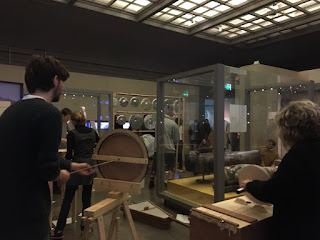Jaar's work questions humanitarian issues such as the refugee crisis and grief. His exhibition at Yorkshire Sculpture Park spans the Underground Gallery and the open air space in front of the gallery.

Outside, in the gravel path leading up to the Underground Gallery, Jaar has installed 101 trees in a grid with walkable passageways between. Masked by, and positioned within the grid of trees there are nine stainless steel frames structures. These are said to reference ‘black sites’, the secret detention facilities operated by the United States Central Intelligence Agency (CIA) around the world where human beings are being tortured and killed.
"I will not act on the world if I do not understand the world." ALFREDO JAAR
In the first room in the gallery the audience meets a wall of bright light forming one of the sides of an installation booth in which visitors are invited to sit and watch a film. The film, The Sound of Silence (2005), reveals the story of a young victim of the 1993 Sudanese famine. Nearing the end of the film, a sudden flash of light reinforces the drama within the narrative.

Jaar's play on light and dark is continued in another room in which a full colour image taken by photographer Koen Wessing of two grieving daughters morph into black and white silhouettes. Shadows (2014) continues in the adjacent space where six additional images taken on the same day show the family's trauma after the murder of a farmer.
"Generally we are taught how to read, but we are not taught how to look." ALFREDO JAAR

A Hundred Times Nguyen (1994) is a work that is based on an experience that Jaar had when he was visiting ‘refugee detention centres’ in Hong Kong in 1991. In the centre of the gallery there is a vitrine containing the story that lead to the work. Jaar had requested permission to photograph a girl, Nguyen Thi Thuy, who later became emotionally attached to him. Jaar photographed her five times at five-second intervals. Out of the hundreds of images he took while he was in Hong Kong, it was these five images that Jaar was most drawn to. It is these that he has replicated and displayed in various orders in A Hundred Times Nguyen. Personally, I do not think that the images need to be shown 100 times for it to be powerful. It was actually the story that I was moved by, and I felt that the images were unnecessary.











































